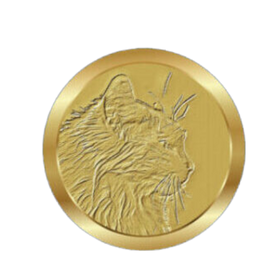
What is Empty-Bowl-Itis? Understanding Your Cat's Dramatic Food Bowl Syndrome
If you're a cat owner, you've probably witnessed this scene: your feline friend sits beside their food bowl, meowing pitifully as if they haven't eaten in days. But here's the twist – there's still food in the bowl! Welcome to the world of "empty-bowl-itis," a peculiar but common behavioral quirk that affects countless cats worldwide.
What Exactly is Empty-Bowl-Itis?
Empty-bowl-itis isn't a medical condition you'll find in veterinary textbooks. Instead, it's a humorous term cat owners use to describe their pet's refusal to eat from a bowl that isn't completely full, even when food remains at the bottom or sides. Your cat acts as though their bowl is empty, demanding fresh food with all the drama of a Shakespearean actor.
This behavior often leaves cat parents scratching their heads, wondering why their perfectly healthy cat is rejecting perfectly good food. The answer lies in understanding feline psychology and natural instincts.
The Science Behind the Behavior
Several factors contribute to empty-bowl-itis, rooted in both instinct and learned behavior:
Whisker Fatigue: Cats have extremely sensitive whiskers that can become overstimulated when they repeatedly touch the sides of food bowls. When food levels drop, your cat's whiskers brush against the bowl more frequently, creating discomfort. This is especially common with deep, narrow bowls.
Freshness Preference: In the wild, cats prefer fresh prey over food that's been sitting around. This instinct carries over to domestic life, where cats may perceive food that's been in the bowl for a while as less desirable, even if it's still fresh by human standards.
Territorial Instincts: Cats are naturally cautious about their food sources. A partially empty bowl might trigger anxiety about resource security, prompting them to request a "fresh" supply.
Learned Behavior: If you've previously refilled your cat's bowl when they complained about it being "empty," you may have inadvertently reinforced this behavior. Cats are excellent at training their humans!
Common Signs Your Cat Has Empty-Bowl-Itis
Recognising empty-bowl-itis is usually straightforward. Your cat may:
- Meow persistently near their food bowl despite visible food remaining
- Paw at the bowl or push food around without eating
- Lead you to their bowl and stare at it meaningfully
- Eat only from the centre of the bowl, leaving food around the edges
- Show renewed interest immediately after you add fresh food or redistribute existing food
How the Ultimate Cat Dish Solves Empty-Bowl-Itis
The Ultimate Cat Dish was specifically engineered to eliminate empty-bowl-itis and transform your cat's mealtime experience. Here's how this innovative design addresses each root cause of this frustrating behavior:
Empty Bowl Frustration: The smart tilt design guides food to the centre of the bowl, ensuring your cat can easily access every morsel and reducing food waste. No more complaints about "empty" bowls when food is still available!
Messy Eating Chaos: The stable base and thoughtful design work together to contain spills and prevent sliding, keeping your feeding area clean and your cat focused on their meal.
Whisker Fatigue Discomfort: The shallow shape prevents whisker contact with the sides, eliminating the uncomfortable overstimulation that causes many cats to avoid eating from partially empty bowls.
Post-Meal Regurgitation: The elevated height may help reduce eating-related upset by promoting better posture during feeding, encouraging slower, more comfortable eating.
Plastic Safety Concerns: Premium soda lime glass construction eliminates chemical leaching concerns while maintaining food freshness and eliminating odor retention that can make cats reject their meals.
Mealtime Anxiety: The calming blue-violet colour was specifically chosen for optimal cat vision, creating a soothing feeding environment that reduces stress and encourages complete meals.
When to Consult Your Veterinarian
While empty-bowl-itis is typically behavioral, sudden changes in eating habits warrant professional attention. Contact your veterinarian if:
- Your cat stops eating entirely for more than 24 hours
- There's a sudden increase or decrease in appetite
- You notice other symptoms like lethargy, vomiting, or changes in litter box habits
- Your cat shows signs of pain while eating
Living with Empty-Bowl-Itis
Remember that empty-bowl-itis is more of a personality quirk than a serious problem. Many cats live their entire lives with this particular preference, and it doesn't indicate any health issues. The key is finding a routine that works for both you and your feline friend.
Some cats may outgrow this behavior, while others maintain their high food presentation standards throughout their lives. Either way, understanding the reasons behind empty-bowl-itis can help you respond appropriately and maintain a harmonious relationship with your discerning cat.
Your cat's seemingly irrational food bowl behavior actually makes perfect sense from a feline perspective. By accommodating their preferences with the right bowl, proper hygiene, and consistent feeding practices, you can easily manage empty-bowl-itis while keeping your cat happy and well-fed.
After all, we all have our quirks – and for cats, demanding a properly presented meal is just another charming aspect of their complex personalities.
Ready to put an end to empty-bowl-itis once and for all? Shop now to end this frustrating occurrence with the Ultimate Cat Dish – designed specifically to solve whisker fatigue and keep your feline friend happy at mealtime!
